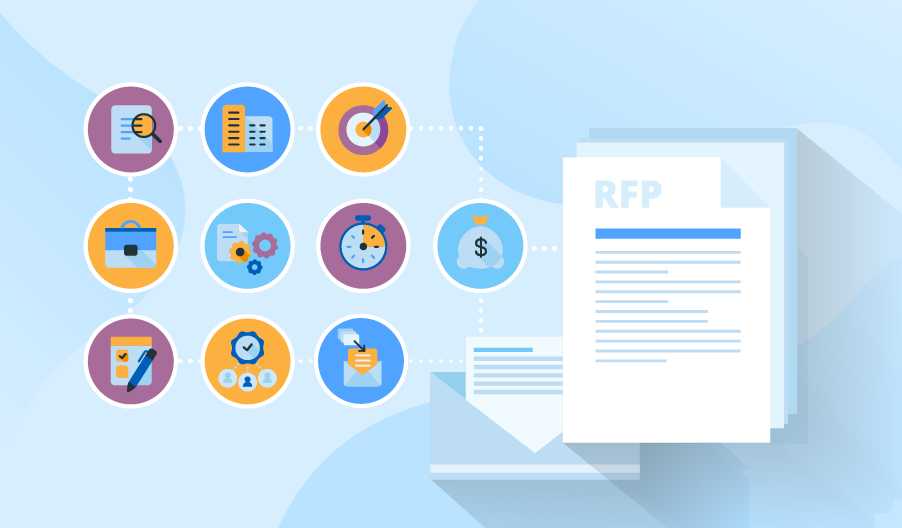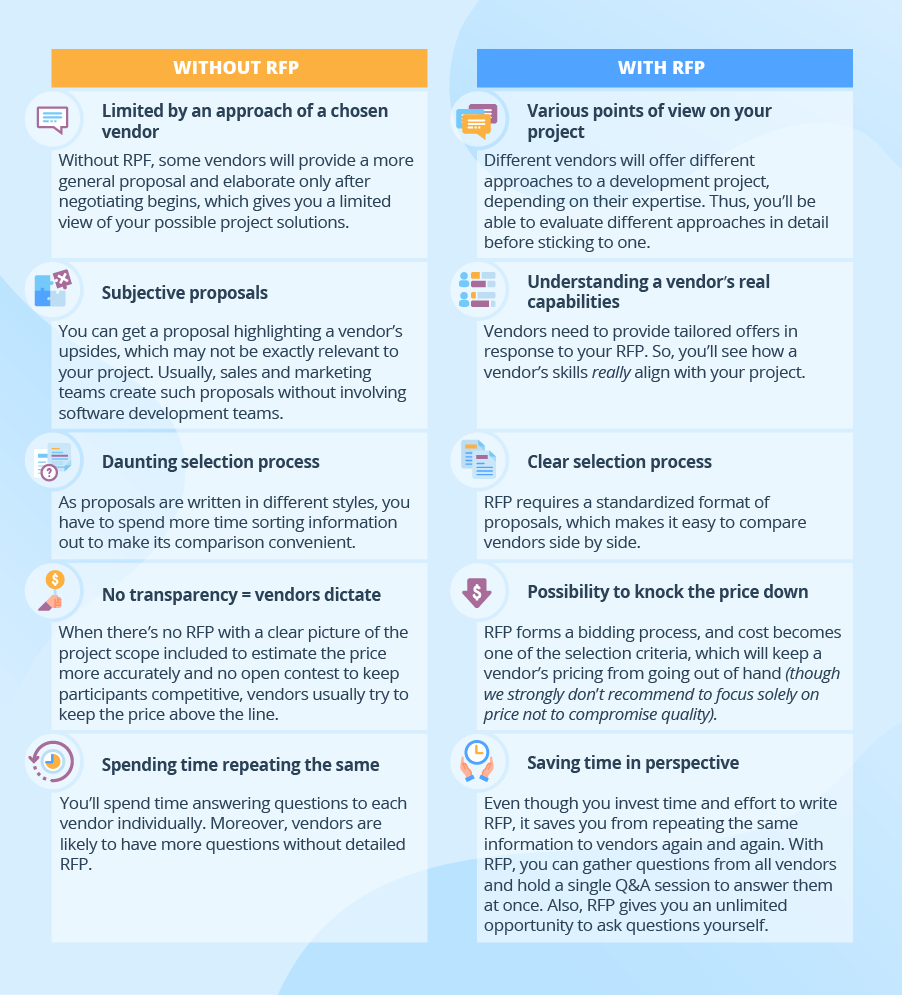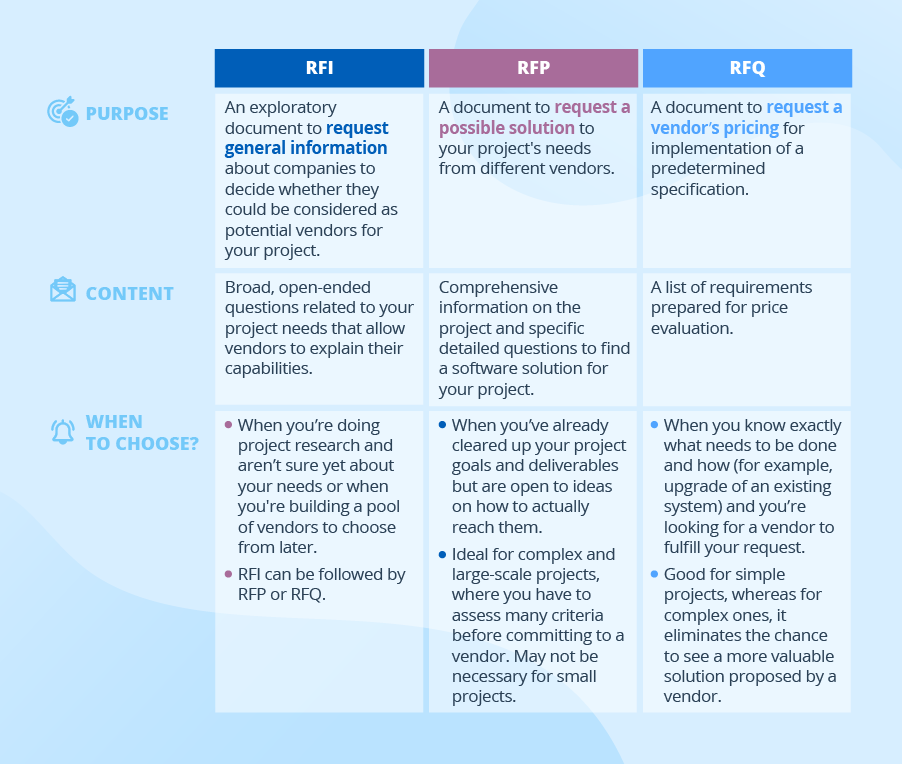Request for Proposal in Software Development: from A to Z
Editor’s note: Follow the tips from ScienceSoft to create RFP that will bring you the best vendor for your needs. And you can always include us in your list of potential vendors: check our software outsourcing offer based on 36-year experience in software development.
Companies looking for a vendor often skip a request for proposal (RFP) stage as they believe this document to be unnecessary. In the article, ScienceSoft dispels this myth and gives an insider’s look at RFP creation, drawing on vast experience in writing proposals as a software outsourcing provider. Read on to understand why and when you need RFP and how to make the best use of it.

Why do I need RFP?
Software development RFP is the document with detailed information on your project that is sent out to potential vendors to get their proposal and a bid for participation in the project.
With RFP vs without RFP
Let’s compare which benefits RFP gives you in contrast to its absence.

Is RFP the only option?
RFP can be used independently, preceded by a request for information (RFI), or even substituted with a request for quotation (RFQ). The table below explains the difference between these documents in detail.

In most cases, RFP is the preferred option as it maximizes your chances to find a trustworthy vendor who will tick all the boxes of what you were looking for.
What should I include in RFP?
ScienceSoft recommends the following structure of RFP:
- A project’s overview: the purpose of RFP and a brief outline of the problems that caused the need for the project.
- A company’s background: a short history behind your company, information about your products or services, values and uniqueness against the competitors.
- Project goals and target audience: the issues and key points of dissatisfaction that a future software solution is aimed to solve, as well as the information on the audience that will use software. Such detailed information will help vendors think of the ways to tailor the user experience to your users specifically.
- Scope of work: a list of services that you expect a vendor to provide (e.g., business analysis, project management, software development, testing, etc.).
- Technical details: technical requirements (e.g., which platforms your software should work on, the need for data migration and third-party integrations), and any limitations (e.g., usage of a specific programming language). Provide as detailed information as possible to minimize the risk of a project’s roadblocks later.
- A project’s timeframe: your expected project deadline (it’s good to leave a room for vendors to adjust the timeline with an explanation behind it).
- Budget: a range of project costs you’re considering.
- General requirements to a vendor: formal and legal requirements for vendors to participate in the project – legal entity, insurance, tax reports, certifications, location, etc.
- Selection criteria: prioritized factors that will define a vendor's selection (e.g., technical expertise, domain knowledge, experience in similar projects, projected costs, fast delivery, etc.).
- Submission requirements: what information vendors should include in their proposals (relevant case studies, testimonials, team members experience, etc.), and the required format (MS Word, PDF), length and the deadline of the submission.
Don’t get frustrated by so many points to cover! A mature vendor will help you define the project aspects you are not sure about yet, for example, estimate the project timeframe and offer the most suitable technology stack.
What are the don’ts for writing RFP?
- Don’t include too many project goals or put all selection criteria as top priorities. Thus, you’ll see more realistic proposals from vendors and better alignment with your time and budget.
- Don’t focus on a possible solution in your RFP. ScienceSoft suggests describing your pain points closely but not going into details about the solution – let vendors offer their solutions that may be much more efficient.
- Don’t send RFP to numerous vendors. To save time and effort, ScienceSoft recommends making a preselection of companies that meet your initial idea of a suitable vendor (if you’re not sure, you can send RFI first before including them in the list): 3 – 5 companies are the best option.
Make a step towards your project launch
ScienceSoft is ready to create a concept of a software solution for you in the framework of your RFP process. However, feel free to turn to us even if you don’t have ready RFP yet – we offer a preliminary consulting on your software development project.

